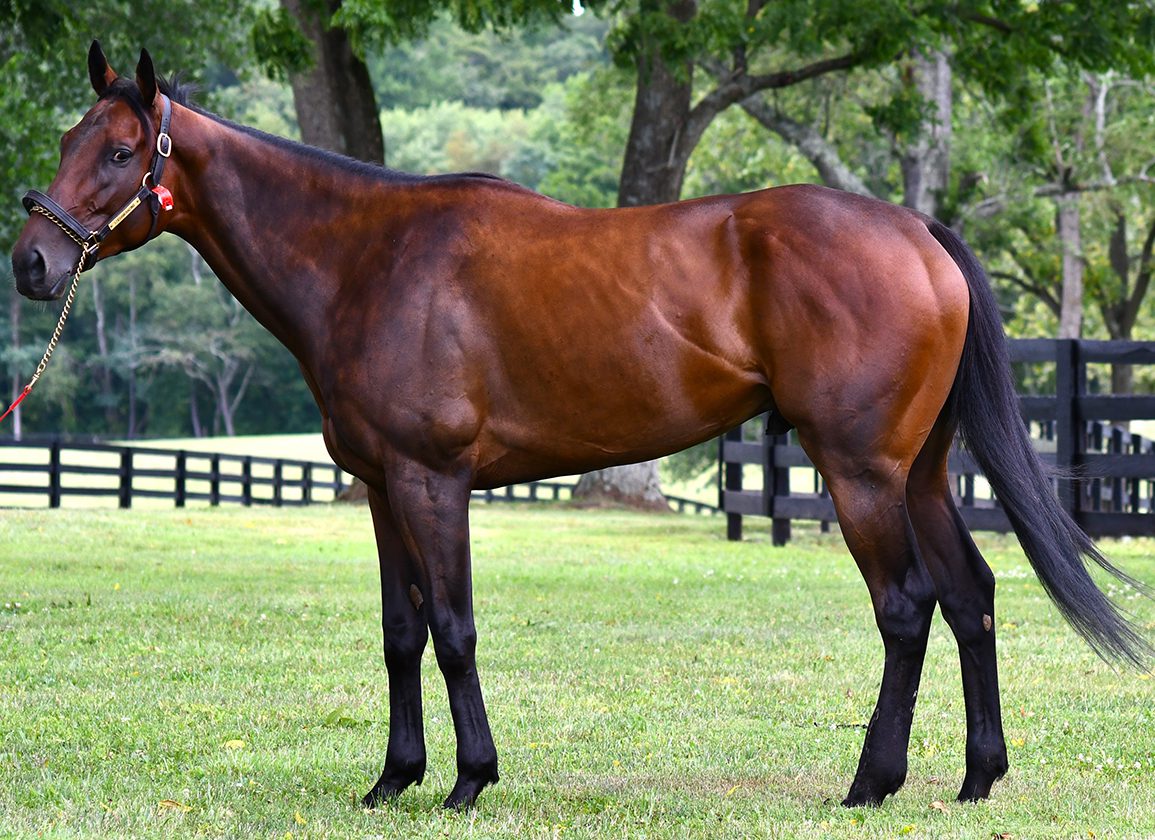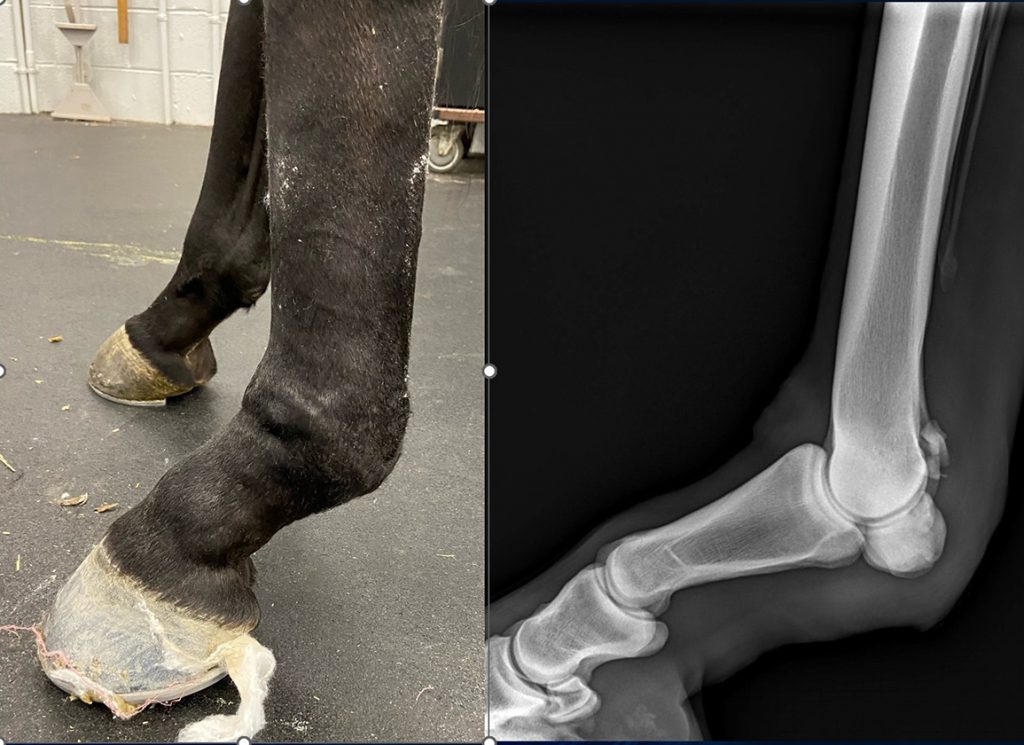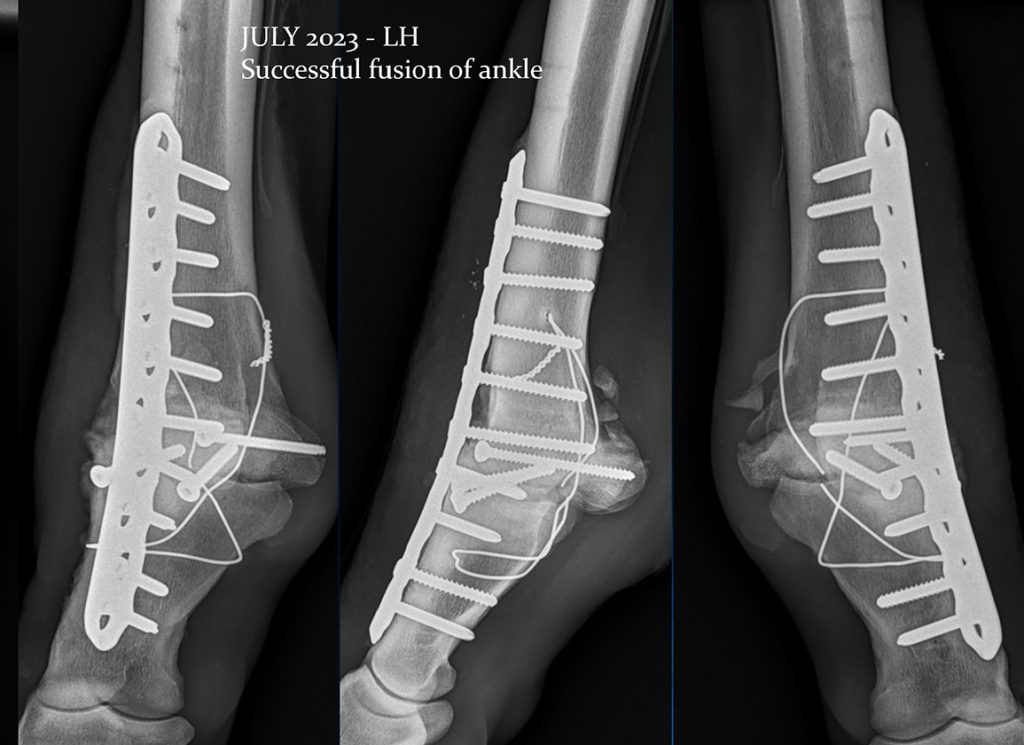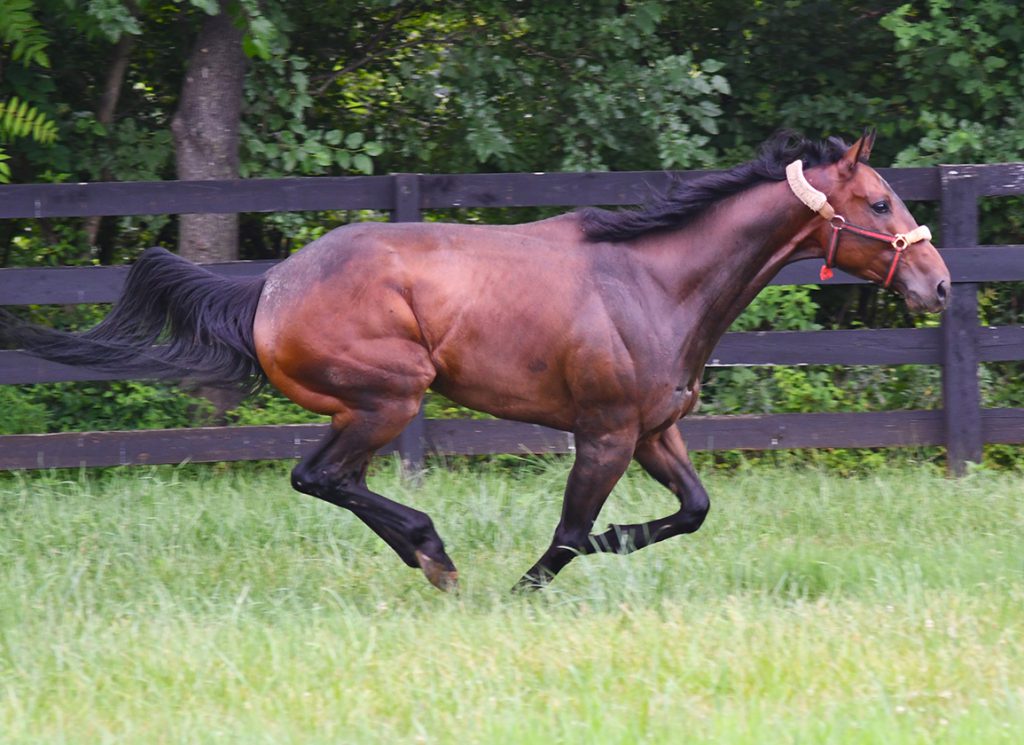By Bill Finley
Minutes after a $40,000 claimer named Jack a Rose (Midshipman) broke down in an Apr. 3 race at Parx Racing, part owner Lisa Novak got a call and was told she had two choices, have the gelding euthanized or go through with an expensive and complex surgery that may or may not save his life. She didn't see it that way. There was only one choice. She would do whatever it took to save Jack a Rose's life.
“I have so much love for him,” Novak said. “You can't just throw a life away.”
Not everyone would have seen it that way.
It was the tenth race at Parx that day, a $40,000 claimer for the type of horses who come and go without hardly anyone noticing. Trained by Michael Stidham, Jack a Rose had won two of eight career starts and earned $87,430. He would never be a stallion, be a star or make a lot of money, but Novak didn't care. She instructed the veterinary team at Parx to send Jack a Rose to Dr. Patty Hogan's clinic, where he would undergo a surgical procedure known as arthrodesis. An arthrodesis is where surgeons artificially fuse the joints through the use of ancillary devices like plates and screws.
“This horse is just so sweet, kind and intelligent,” Novak said. “I had to do this for him.”
The injury occurred in the left hind leg.
“You hear the common term breakdown injury all the time, on the newscasts and TV shows,” said Hogan, who would perform the surgery on Jack a Rose. “They are very serious injuries that happen to the ankle. It's when the horses lose the integrity of the function of the ankle whether by breaking a sesamoid or suspensory. These surgeries are difficult and they are expensive. It has a lot of complications associated with it. It's a huge investment.”
Performing an arthrodesis on a horse is not uncommon. Echo Zulu (Gun Runner) underwent the surgery after she broke down prior to the Breeders' Cup and so did Geaux Rocket Ride (Candy Ride {Arg}) before he was also injured while preparing for the Breeders' Cup. Echo Zulu survived; Geaux Rocket Ride did not. For those horses, the surgery made economic sense. Both had tremendous residual value and were worth far more than the cost of the surgery. No matter what happened with his surgery, Jack a Rose would never race again and could not even be ridden. He would be a pasture pet, one with no economic value.
“The people who owned this horse are working-class people who bred and loved this horse,” Hogan said. “He was a modest race horse but they didn't feel like bailing on him. They wanted to fix him even if that meant he was just going to live somewhere for the rest of his life. He has no economic value whatsoever. What they did, that kind of got to us. It was really touching that they took this to the extremes they did as responsible horse owners. Euthanasia was an absolutely reasonable choice for this kind of injury.”
And there were no guarantees that he would survive the surgery.
“There are a lot of problems with this surgery,” Hogan said. “They are prone to laminitis in the other leg. They get infections because of all the metal. There's a lot of stress and a lot of tissue trauma. It's a big undertaking. Even if you have a horse that is insured many insurance companies consider the surgery an extreme measure and they won't honor the insurance policy.”
Hogan normally gives a horse a break of a few days between the time they are injured and when she operates. Novak could have changed her mind, something a lot of people might have done when they started to add up the numbers. The cost of the operation plus the payments for the time the horse is laid up and recovering would come out to about $25,000.
Novak grew up in Chicago and followed racing since she was very young. The first horse she fell in love with was Timely Writer, who had to be euthanized after breaking down in the 1982 GI Jockey Club Gold Cup. She said she was always haunted by his death and that it was never far from her mind when she had to start making decisions about Jack a Rose. Then there was the finances.
“I am a supervisor at a carwash here in Chicagoland,” Novak explained. “I've made $61,000 so far this year and my take home pay has been about $48,000. No, I really didn't have the money to do this. I've been through hard times financially before. I had to do it.”
She said she used credit cards to make the payments.
Jack a Rose was operated on Apr. 18 and everything went according to plan.
“We removed all the cartilage of his joint and put it back in perfect alignment with screws and wiring and a plate and let bone heal to bone so it becomes one single unit of bone that's very functionable,” Hogan explained. “It no longer bends but horses who have had this surgery can get around fine.”
Hogan said that she and her entire team rallied around the horse.
“This was a completely heart-warming story,” Hogan said. “We do this surgery for horses, but it's always for ones that are worth a ton of money. To do one for a horse who is a 5-year-old gelding was just amazing. Our whole crew, we were heavily invested in this horse. He's a wonderful horse. Just an amazing animal. To know how much these people cared about him was special. It was very satisfying to have been able to do a good job for them. Horse racing get bashed so much. I like to get these stories out there to educate people and show them there are plenty of people out there who really love their horses.”
Unable to have a second career, Jack a Rose is among the newest arrivals at Old Friends. Novak is hoping to visit him in January.
“I love animals,” she said. “If I could save every horse I would.”
Not a subscriber? Click here to sign up for the daily PDF or alerts.









